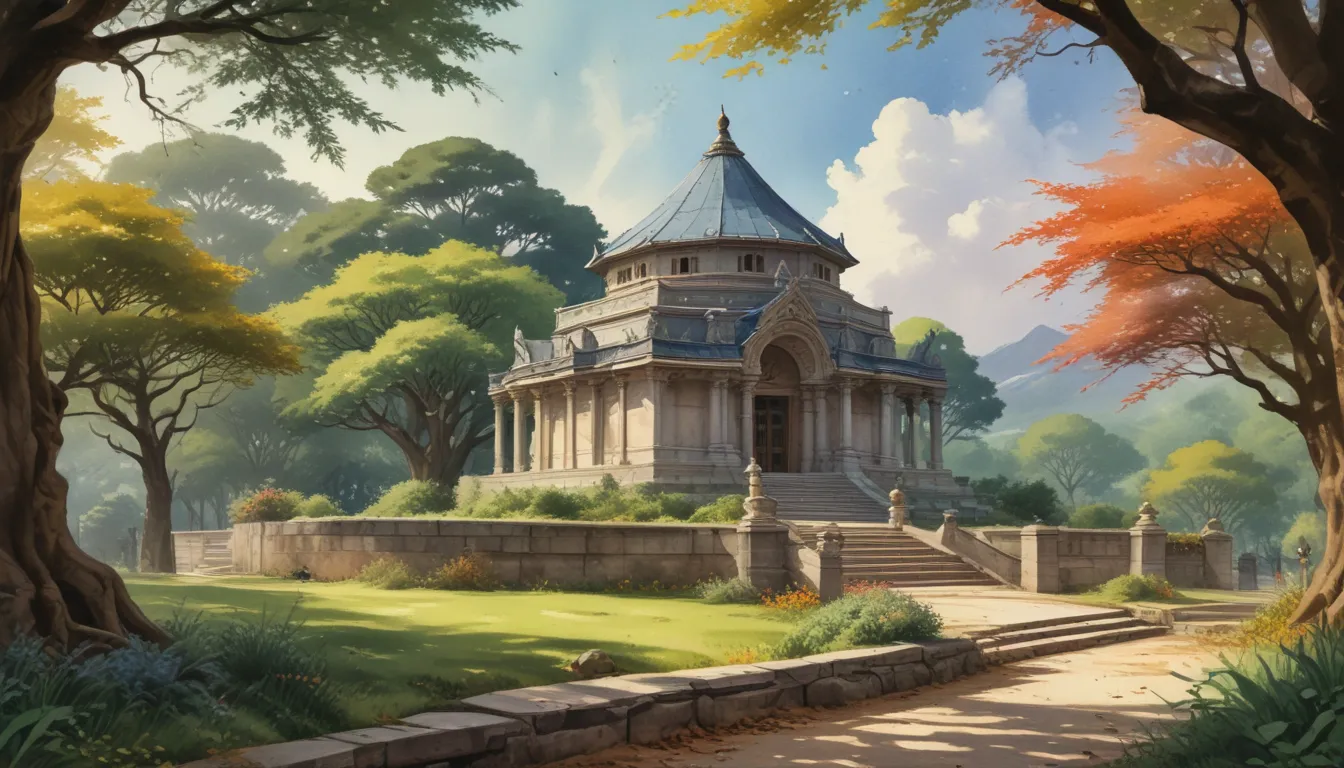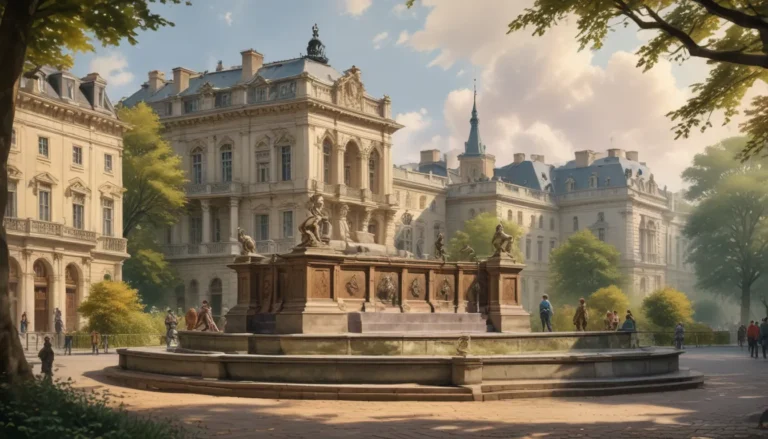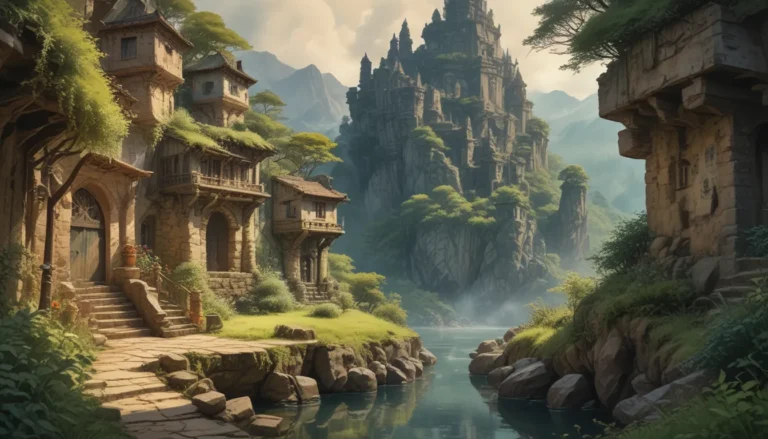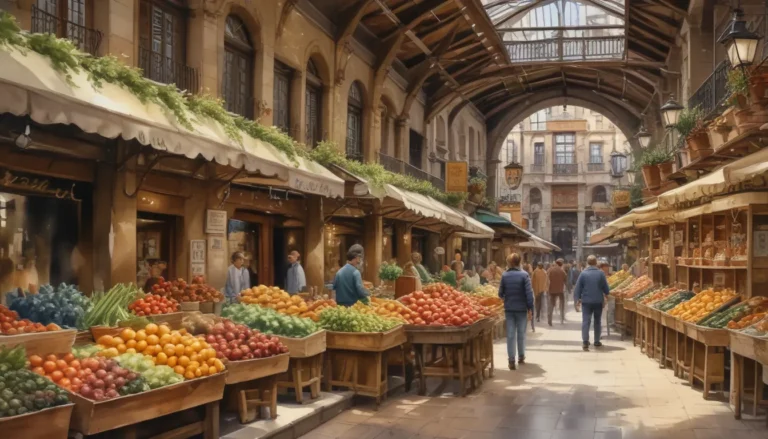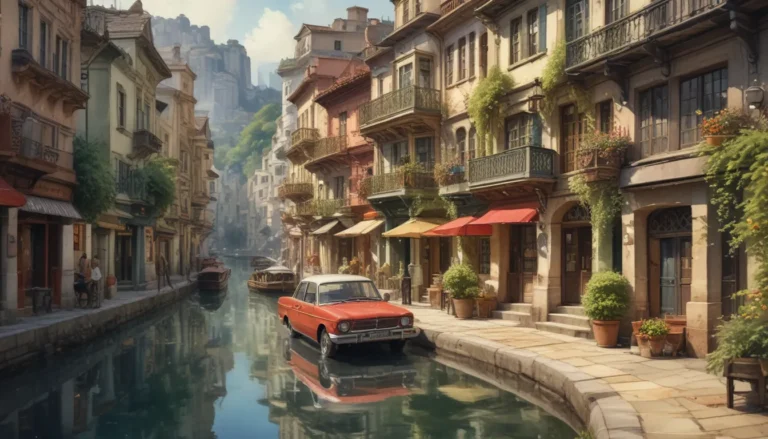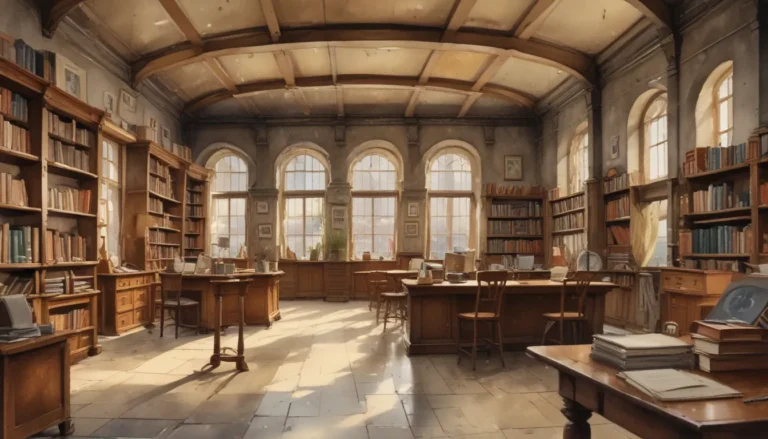The images in our articles are for illustrative purposes only and may not exactly match the content. They are intended to capture your interest and complement the text, not to replace it.
Nestled in the picturesque town of Bodrum, Turkey, the Mausoleum at Halicarnassus stands as a testament to ancient power, wealth, and architectural brilliance. Built in the 4th century BC as a final resting place for Mausolus, the ruler of Caria, and his wife Artemisia II, this monumental tomb has captured the imagination of historians, archaeologists, and visitors from around the world. In this article, we will delve into 13 enigmatic facts about this awe-inspiring landmark, exploring its history, design, and enduring legacy that continues to inspire modern-day architects.
The Tale of Mausolus and Artemisia II
The Mausoleum at Halicarnassus was commissioned by Mausolus, a powerful ruler who desired a grand monument to commemorate his legacy for eternity. Construction of this magnificent tomb began in the mid-4th century BC under the supervision of his devoted wife, Artemisia II. The couple’s vision for an architectural masterpiece would soon become a symbol of their wealth and influence.
A Wonder of the Ancient World
Joining the elite ranks of the Seven Wonders of the Ancient World, the Mausoleum at Halicarnassus garnered global acclaim for its grandeur and intricate design. Standing at an impressive height of approximately 45 meters, this architectural marvel boasted stunning sculptures and reliefs that adorned its exterior, depicting tales from Greek mythology and historical battles.
A Fusion of Architectural Styles
Designed by renowned Greek architects Satyros and Pythius, the Mausoleum at Halicarnassus exemplified a harmonious blend of Greek, Egyptian, and Lycian architectural elements. This fusion of styles resulted in a captivating aesthetic that showcased the mastery and creativity of the craftsmen of that era.
Enduring Natural Challenges
Throughout its existence, the Mausoleum at Halicarnassus faced numerous natural challenges, with earthquakes causing significant damage to the structure over the centuries. Despite these setbacks, the monument stood as a testament to the resilience and ingenuity of its builders.
The Legacy of Repurposed Remnants
Following its eventual decline and destruction, the remains of the Mausoleum were repurposed by various civilizations. Notably, the Knights of St. John utilized the stones to construct the nearby Bodrum Castle, showcasing the enduring influence of this ancient landmark.
Preserving History at the British Museum
The artistic significance of the Mausoleum at Halicarnassus led to the preservation of some of its surviving sculptures, which are now housed at the British Museum in London. Visitors can admire these stunning artifacts, offering a glimpse into the rich cultural heritage of this ancient wonder.
The Origin of a Name
Such was the grandeur and significance of the Mausoleum at Halicarnassus that the term “mausoleum” originated from its name. Today, this word is universally recognized as a descriptor for grand tombs and monumental burial structures.
A Testament to Architectural Ingenuity
While only the base of the Mausoleum remains visible today, its lasting impact on architectural design is undeniable. Modern-day architects continue to draw inspiration from its grandeur, elegant proportions, and intricate detailing, perpetuating its legacy in contemporary structures.
Embarking on a Historical Journey
Exploring the history and significance of the Mausoleum at Halicarnassus offers a captivating journey into the ancient world. Through historical accounts and remaining fragments, we can marvel at the craftsmanship and artistic prowess of our ancestors, underscoring the enduring allure of this architectural wonder.
In conclusion, the Mausoleum at Halicarnassus stands as a timeless enigma, captivating generations with its grandeur and historical significance. While remnants of this ancient marvel may lie in ruins today, its legacy endures as a symbol of human creativity and architectural achievement. As we reflect on the mysteries and magnificence of this iconic structure, we are reminded of the profound impact of ancient wonders on our understanding of the past.
FAQs – Unveiling the Mysteries
-
What is the Mausoleum at Halicarnassus?
The Mausoleum at Halicarnassus was an ancient burial monument built for Mausolus, the ruler of Caria, around 353 BCE in present-day Bodrum, Turkey. -
Why is it called one of the Seven Wonders of the Ancient World?
The Mausoleum at Halicarnassus was renowned for its architectural significance and grandeur, earning a place among the elite Seven Wonders due to its extraordinary design. -
What happened to the mausoleum?
Over time, the Mausoleum at Halicarnassus succumbed to earthquakes and was repurposed by subsequent civilizations, leaving only fragments and ruins of its original structure. -
What were the dimensions of the mausoleum?
The Mausoleum at Halicarnassus had a base measuring approximately 40 meters by 30 meters, with a towering height of around 45 meters, adorned with intricate sculptures and reliefs. -
Can visitors still visit the Mausoleum at Halicarnassus?
While the original mausoleum is no longer intact, visitors can explore the site and view the remaining ruins, including fragments of sculptures, at the Mausoleum at Halicarnassus Museum in Bodrum, Turkey. -
Are there any replicas or reconstructions of the mausoleum?
Full-scale replicas or reconstructions of the Mausoleum at Halicarnassus do not exist today, although artistic representations offer insights into its original appearance. -
Who was Mausolus?
Mausolus was the ruler of Caria, an ancient Anatolian region, who commissioned the construction of the mausoleum as a final resting place for himself and his wife, Artemisia II. -
How long did it take to complete the construction of the mausoleum?
The construction of the Mausoleum at Halicarnassus spanned approximately three to four years, beginning around 353 BCE and concluding after Mausolus’ death in 350 BCE. -
What was the architectural style of the mausoleum?
The Mausoleum at Halicarnassus showcased a blend of architectural styles, including Greek, Persian, and Egyptian elements, featuring columns, friezes, and intricate stone carvings. -
Who designed and built the mausoleum?
The renowned architects Pytheos and Satyros were responsible for the design and construction of the Mausoleum at Halicarnassus, creating a masterpiece that transcended time.
Embrace the allure of ancient wonders like the Mausoleum at Halicarnassus, unraveling the mysteries of the past to gain a deeper appreciation for the enduring legacy of human ingenuity. As you journey through the annals of history, may you find inspiration in the remarkable achievements of our ancestors, leaving a lasting imprint on the fabric of time.
